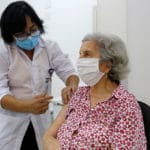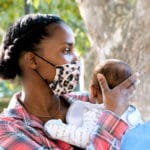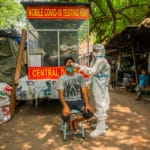Efficacy and safety of COVID-19 treatments (DP1-EFCT)
November 5, 2020 9:45 amDriver Project 1 is a holistic evaluation of the efficacy and safety of treatments for the COVID-19 pandemic globally.
Driver Project 1 is a holistic evaluation of the efficacy and safety of treatments for the COVID-19 pandemic globally.
Driver project 2 focuses on the International Perinatal Outcomes in the Pandemic (iPOP) – a study exploring the impact of the pandemic lockdown on preterm births worldwide, including variances across countries.

To quantify the real-world value of COVID-19 vaccines in Brazil for protecting the individuals and the whole population by using statistical and machine-learning approaches on data from patients and from an existing COVID-19 mobile application.

To measure the effect of the COVID-19 pandemic and associated containment policies such as curfews on health care in seven countries by using health management information systems to evaluate the quality of care and mortality rates from non-COVID conditions.

To understand COVID-19 evolution and impact, also on pregnancy and chronic diseases, by applying a data science approach to health data to study the clinical epidemiology and evolution of a new SARS-CoV-2 variant, which emerged in South Africa.

To reformat and clean up the ISARIC-COVID-19 dataset, which is one of the largest and richest datasets consisting of over 520,000 hospitalised patients from more than 62 countries, so it can be better utilised by researchers.

To improve control measures for COVID-19 by applying statistical methods to existing datasets containing over 40,000 COVID-19 cases from five Asian countries to reconstruct transmission chains between individuals in households and communities.

To combat the effects of social and economic inequality in Brazil on the impact of COVID-19 by creating a social disparities index and visualization dashboard to help identify vulnerable populations and focus prevention efforts.

To improve maternal, neonatal, and child health in Uganda and Kenya during pandemics by using a modelling approach on existing data from 30,000 pregnancies to identify risk factors for adverse outcomes.

to reduce the impact of a pandemic on an unequal population such as that in Brazil by applying mathematical and statistical methods to socio-economic and health data to predict COVID-19 transmission and health outcomes.